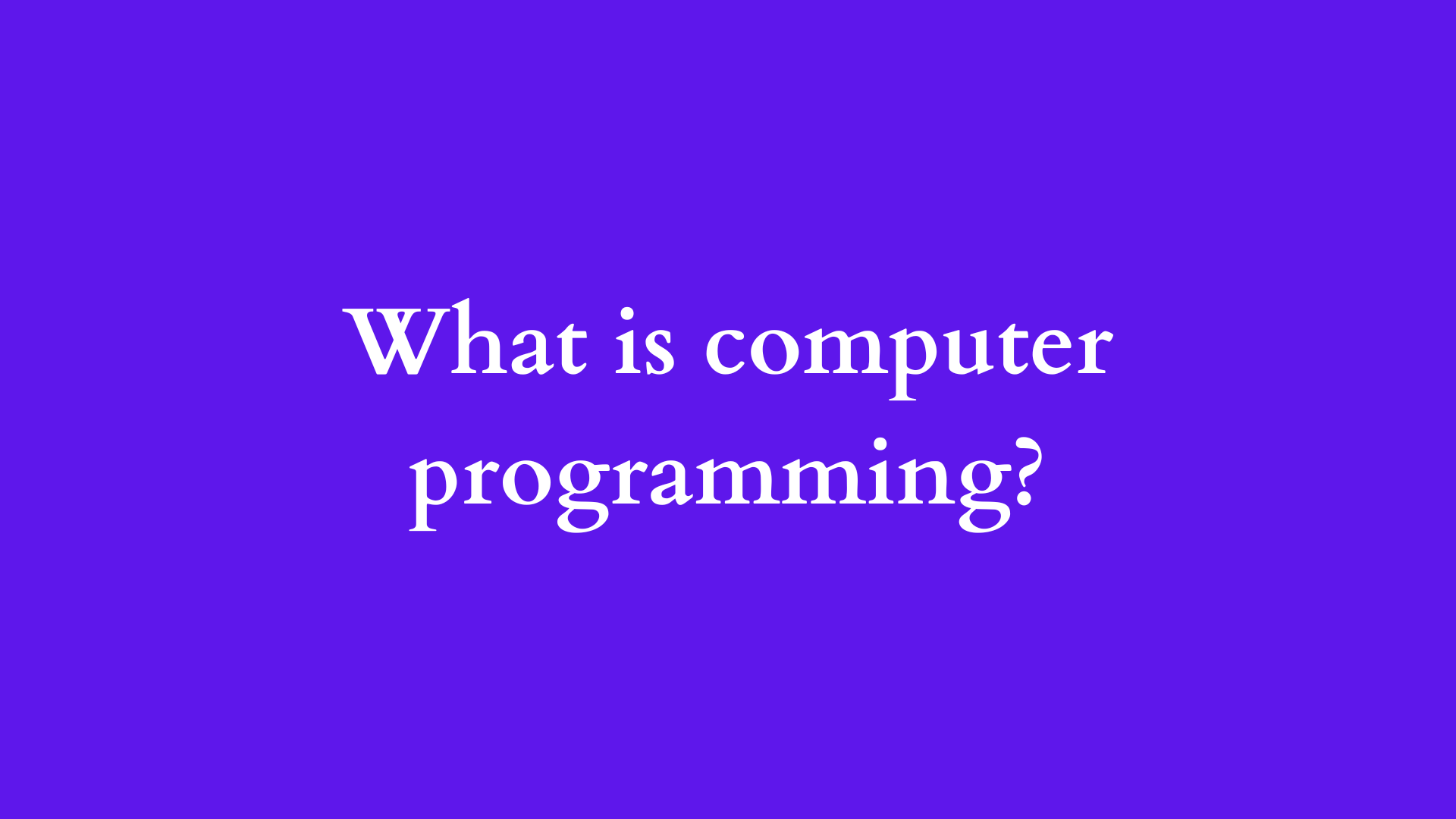Understanding Computer Programming: A Comprehensive Overview
In an era defined by technological advancement, the term “computer programming” has become ubiquitous. From the apps on our smartphones to the software powering our industries, programming is an essential skill shaping the modern world. But what exactly is computer programming? This blog post explores its definition, historical evolution, core components, methodologies, and the skills required to become an effective programmer.

Defining Computer Programming
At its core, computer programming is the process of designing and writing instructions that a computer can follow to perform specific tasks or solve problems. These instructions, known as code, are written in various programming languages, each designed with its syntax and semantics. When executed, this code directs the computer’s hardware to carry out the specified operations, from simple calculations to complex data processing tasks.
Programming can be seen as a form of communication between humans and machines. Much like a spoken or written language allows individuals to express ideas and emotions, programming languages enable developers to convey instructions to computers. This dual aspect makes programming both a technical skill and a creative endeavor.
A Brief History of Programming
The history of computer programming dates back to the very inception of computing. The term “program” itself can be traced to the early 19th century when Ada Lovelace, often regarded as the first computer programmer, wrote notes on Charles Babbage’s Analytical Engine. Although the device was never completed, her vision laid the groundwork for future computing.
The development of programming languages began earnestly in the mid-20th century. Early programming involved low-level machine code, which consists of binary numbers that directly correspond to hardware operations. As computer systems advanced, so did the need for more user-friendly programming methods, which led to the creation of assembly languages and higher-level programming languages.
The introduction of languages such as Fortran in the 1950s, COBOL for business applications, and C for systems programming revolutionized the field. These languages allowed for more abstract and human-readable code, making programming more accessible to a broader audience. Over the decades, many new programming languages have emerged—such as Python, Java, and JavaScript—each designed to address specific needs in programming and software development.
The Core Components of Computer Programming
1. Syntax and Semantics
Every programming language has its own syntax, which refers to the set of rules that determines the structure of valid statements. Semantics, on the other hand, involves the meaning behind those statements. Understanding syntax and semantics is crucial for writing code that not only runs without errors but also accomplishes the intended tasks.
2. Algorithms
An algorithm is a step-by-step procedure or formula for solving a problem. Algorithms are the backbone of programming; they provide a clear approach to executing tasks. Learning to develop efficient algorithms is essential, as it directly influences the performance and effectiveness of the written code.
3. Variables and Data Types
Variables are placeholders used to store data that can be manipulated within a program. Each variable has a specific data type, which defines the kind of data it can hold, such as integers, floats, strings, or booleans. Understanding how to properly utilize variables and data types is fundamental for effective programming.
4. Control Structures
Control structures determine the flow of execution in a program. They allow developers to implement decision-making processes (using conditional statements), repetition (through loops), and complex behaviors. Mastering control structures is vital for creating dynamic and responsive applications.
5. Debugging and Testing
Writing code is an iterative process that inevitably includes encountering errors or bugs. Debugging is the practice of identifying and rectifying these issues to ensure the program runs smoothly. Additionally, testing is a critical part of programming, involving the systematic evaluation of software to ensure it meets requirements and functions as intended.
Programming Methodologies
Computer programming methodologies refer to the strategies used throughout the software development process. Some popular methodologies include:
1. Waterfall Model
The Waterfall model is a linear, sequential approach to software development. Each phase must be completed before the next begins, which can provide clarity but may lack flexibility if project requirements change.
2. Agile Development
Agile methodology promotes iterative development, focusing on collaboration and flexibility. It allows teams to adapt to changes quickly and deliver functional software in shorter cycles. Agile practices encourage regular feedback and continuous improvement, making it a popular choice in today’s fast-paced tech landscape.
3. DevOps
DevOps combines development and operations, emphasizing collaboration between software engineers and IT professionals. This methodology fosters a culture of continuous integration and delivery, aiming to reduce the time between writing code and deploying it to production.
Essential Skills for Aspiring Programmers
Becoming proficient in computer programming requires a combination of technical aptitude and soft skills. Here are some essential skills every aspiring programmer should develop:
1. Problem-Solving Skills
Programming is fundamentally about problem-solving. A programmer must be able to analyze complex problems, break them down into manageable parts, and devise effective solutions. This analytical mindset is critical in both developing algorithms and debugging code.
2. Attention to Detail
Programming requires precision. A single misplaced character can lead to errors or unintended consequences. Attention to detail helps programmers write clean, efficient code and reduces the likelihood of bugs.
3. Familiarity with Tools
Proficiency in tools such as integrated development environments (IDEs), version control systems (like Git), and testing frameworks is essential for modern programming. Familiarity with these tools enhances productivity and streamlines the coding process.
4. Continuous Learning
The technology landscape is in constant flux, with new programming languages, frameworks, and best practices emerging regularly. An effective programmer embraces lifelong learning, staying updated with current trends and continuously expanding their skill set.
Conclusion
In summary, computer programming is an invaluable discipline that combines creativity, analytical thinking, and technical skills. It is a field with a rich history that continues to evolve, shaping everything from everyday applications to groundbreaking technology and business solutions.
As the world becomes increasingly reliant on digital solutions, understanding the principles of programming is not just beneficial for those entering the tech industry; it provides a foundational skill set applicable in various sectors. Whether you are considering a career in programming or simply wish to gain a better understanding of the technology that drives our lives, delving into the world of computer programming is a rewarding endeavor that opens up a wealth of opportunities.
Shop Now






